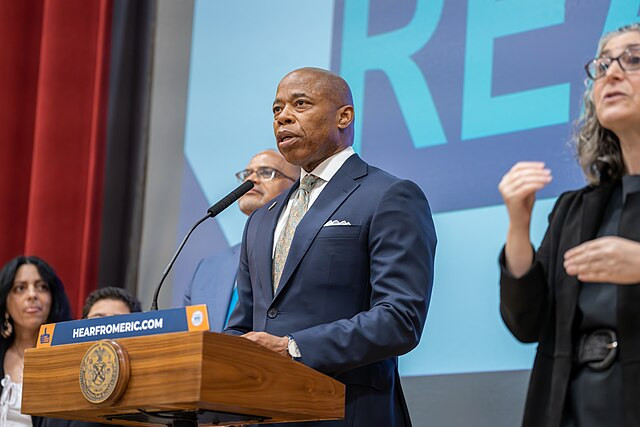New York City is grappling with the financial and logistical burden of a migrant crisis that has already cost the city over $5 billion, with projections suggesting that the total expense could soar to $10 billion by 2025. This unprecedented expenditure, driven by the influx of asylum seekers into the city, has placed enormous pressure on municipal resources, sparking concerns about the long-term sustainability of these efforts.
The city's asylum-seeker funding tracker indicates that New York City has already spent $4.88 billion through fiscal years 2023 and 2024. With the start of the new fiscal year on July 1, the city has likely exceeded $5 billion in spending. This figure is expected to double by 2025, according to estimates from Mayor Eric Adams' administration, reflecting the continuous strain on the city's budget.
Of the staggering $5 billion, nearly $2 billion has been allocated for housing and rent, as the city scrambles to find shelter for the thousands of migrants arriving each week. Another $2 billion has been spent on services and supplies, while food and medical costs have consumed nearly $500 million. The New York Police Department (NYPD) has also seen its budget strained, spending $21 million on public safety and security related to the crisis-almost equal to the department's entire annual budget of $5.75 billion.
The city has been forced to repurpose various facilities, including hotels in the heart of Manhattan's tourist district, into emergency shelters. Contracts with the Hotel Association of New York City have transformed hotels like the City View Inn in Long Island and the Spring Hills Suites by Marriott in Queens into migrant shelters, costing the city millions. These measures, while necessary, have sparked backlash from residents and business owners alike, who are concerned about the long-term impact on their communities.
Camille Joseph Varlack, Mayor Adams' chief of staff, emphasized the global nature of the crisis, saying, "This is not a New York City issue or even a United States issue; this is a worldwide issue." She pointed to ongoing wars, climate change, and other global factors as drivers of migration, suggesting that the influx of asylum seekers is unlikely to slow down in the near future.
Despite the overwhelming financial burden, Mayor Adams expressed cautious optimism during a recent press briefing. "I do believe we are going to see people starting to exhale. Our fingers are crossed, but we put in smart policies," Adams said, referring to the city's new 30-day shelter limits for individuals and 60-day stays for families. He credited these measures, along with a recent decline in border crossings, for a reduction in the number of new arrivals-from a peak of 4,000 migrants per week to around 700 last week.
However, Adams warned that the city is "not out of the woods" yet. The mayor highlighted the ongoing challenges of moving migrants from shelters to permanent housing, especially when many lack the necessary documentation to seek legal employment. He also pointed to safety concerns, noting the need to monitor and manage the small number of violent gang members among the migrant population.
Recent incidents have underscored these safety concerns. A stabbing at a migrant encampment near Randall's Island and a deadly shooting weeks earlier have raised alarms about the conditions in and around city-funded shelters. Additionally, a migrant was recently arrested for allegedly raping a woman at knifepoint near Coney Island's boardwalk. Mayor Adams expressed frustration over the city's inability to coordinate with U.S. Immigration and Customs Enforcement (ICE) due to local laws, describing the suspect as "the poster child of what's wrong with not doing that coordination."
The ongoing crisis has forced the city to take drastic measures, including posting additional contracts worth $40 million to manage the expanding shelter network. The Department of Homeless Services announced these new contracts to service migrants at hotels converted into emergency shelters, reflecting the city's ongoing struggle to accommodate the rising number of asylum seekers.
As New York City continues to manage the crisis, the financial implications remain daunting. The city has processed approximately 212,000 migrants since the spring of 2022, with 63,900 currently in the city's care. While the reduction in new arrivals offers some relief, the long-term costs of housing, feeding, and securing such a large population are set to challenge the city's budget for years to come.






